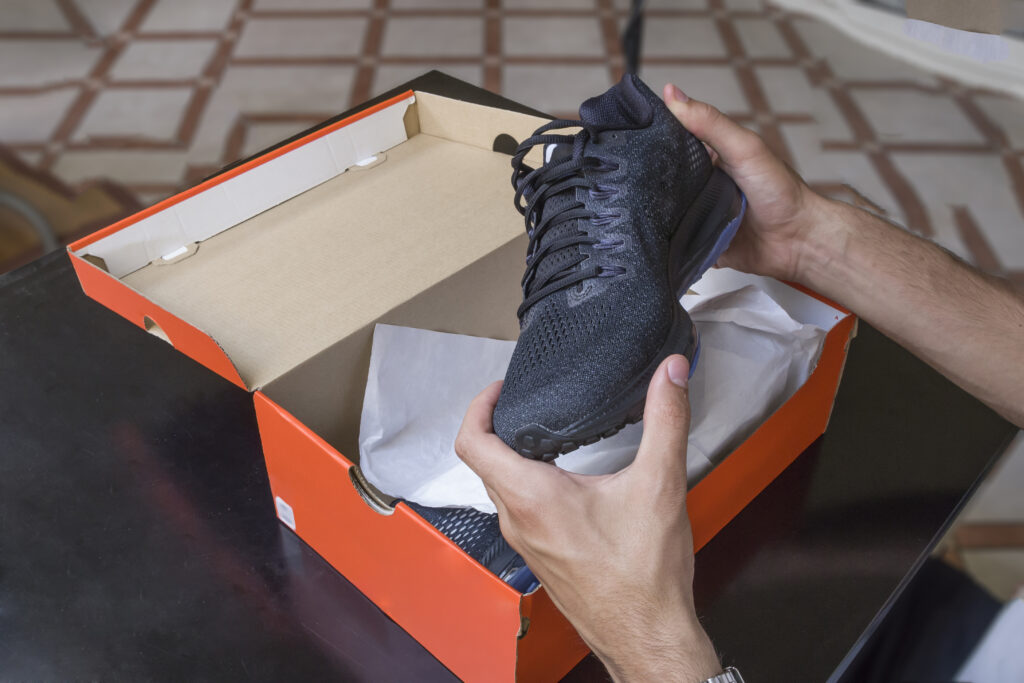Have you ever felt a weird pain and wondered why? The pain can be intense or dull, tight or sharp, and may only be present when doing certain activities. Maybe your body has been feeling more fatigued lately or your runs have felt harder. This article will be explaining how often you should get new shoes and why. I am not a doctor and cannot offer any medical advice, however, I can offer what I have learned through years of experience.
Believe it or not, shoes have a huge impact on your run. Wearing the wrong kind of shoes, worn out shoes, or even new shoes can contribute to aches, pains, and fatigue.
Worn Out Shoes
Have you had the same shoes for a while and recently started experiencing foot pain? It may be time to get new shoes. There are different ways to tell if your running shoes are worn out or not.
Mileage
For each pair of shoes you wear, there is a recommended mileage at which you should get new shoes. To find this out, look up how many miles can you put on *the specific shoe you run in* and even if there isn’t a definite answer, there will most likely be talk on runner forums that discuss the amount of miles put on the shoe by other runners before they needed to change.
For example, if I was looking up my shoes, ASICS Gel-Cumulus 25, then I would look up “How many miles can you put on asics gel cumulus 25” and the first thing that pops up is a reddit forum. Keep in mind that this shoe is newer and newer shoes may be harder to find information like mileage on.
When I was competing in high school cross country and track, I would get a new pair of shoes at the start of every season as a general rule of thumb. I did not do a very good job at writing down my mileage in high school so it would have been difficult for me to get shoes based off of the mileage.
Tread
Another way I keep track of when to get new shoes is by looking at the tread. In case you didn’t know, the tread is the bottom of the shoe. The tread could be worn out and starting to look bare, which means it is time to get new shoes.
If you’re unsure on whether or not the tread is getting bare, compare the bottom of your shoes to a pair of new shoes. If the new shoes have a considerable amount of more tread on the bottom than your pair does, then you may want to look into getting another pair.
Cushioning
Something I have just recently noticed is that the cushioning on a shoe is a huge indicator on whether or not you need new shoes.
I had a stress fracture in my knee mid-track season, which was about 7 months ago, that had already healed by the time I went to the doctors for it. Even though I was fully healed, I was still feeling a considerable amount of pain doing every day tasks. I was sitting down one night looking at the shoes that I walk around in, when I realized that the cushioning was completely compact and not spongey anymore. I got out a new pair of shoes from my closet and tried wearing those daily to see if anything would change.
I could tell a difference in the cushioning from the start, even though it was the same kind as my old pair. In the following weeks, my knee pain went away completely and still at the time of writing I haven’t experienced any knee pain.
That just goes to show you how much of an impact a pair of well-cushioned shoes can have on the body as a whole.
New Shoes
What if you took my advice and got new shoes, but the pain, aches, and fatigue persist? It could be due to the pair of shoes you got.
When I started cross country my senior year, I had a pair of Nike Alphafly Next %. I began to notice a growing pain in the middle of the bottom of my feet. It slowly got worse each time I would put on those shoes to run. I had never felt this pain before with any of the many pairs of shoes I’ve worn in the past, so I know it must be these new shoes. Eventually the pain went away and my feet got used to the new shoes.
For some, the pain of getting new shoes might not go away and that means you got the wrong kind. I believe the running shoes you wear are very important and should be heavily researched before you decided to make the purchase.
The Wrong Type of Shoes
Running shoes are not a one size fits all kind of deal. Each person runs differently, so a pair of shoes that work for your friend might not work for you.
The best way to figure out how you run is to record a video of your feet hitting the ground. You will then know what kind of pronation you have, which will narrow down your options of shoes a little bit. There are some shoe stores that will even do this for you and then fit you to find the best pair of shoes that fit your needs.
After knowing what pronation you have, the rest is really up to you. Certain people may be prone to certain injuries, so you would need to change the type of shoes you run in accordingly. For example, if you get shin splints, you may want to run in a pair of shoes that would help prevent shin splints.
If you have tried getting new shoes that you know are perfect for your running style and you still hurt or aren’t feeling the best, it may be time to consult your doctor to see what is going on. Your physical health is very important, especially as a runner, and making sure you have the right pair of shoes is one step in the right direction.

